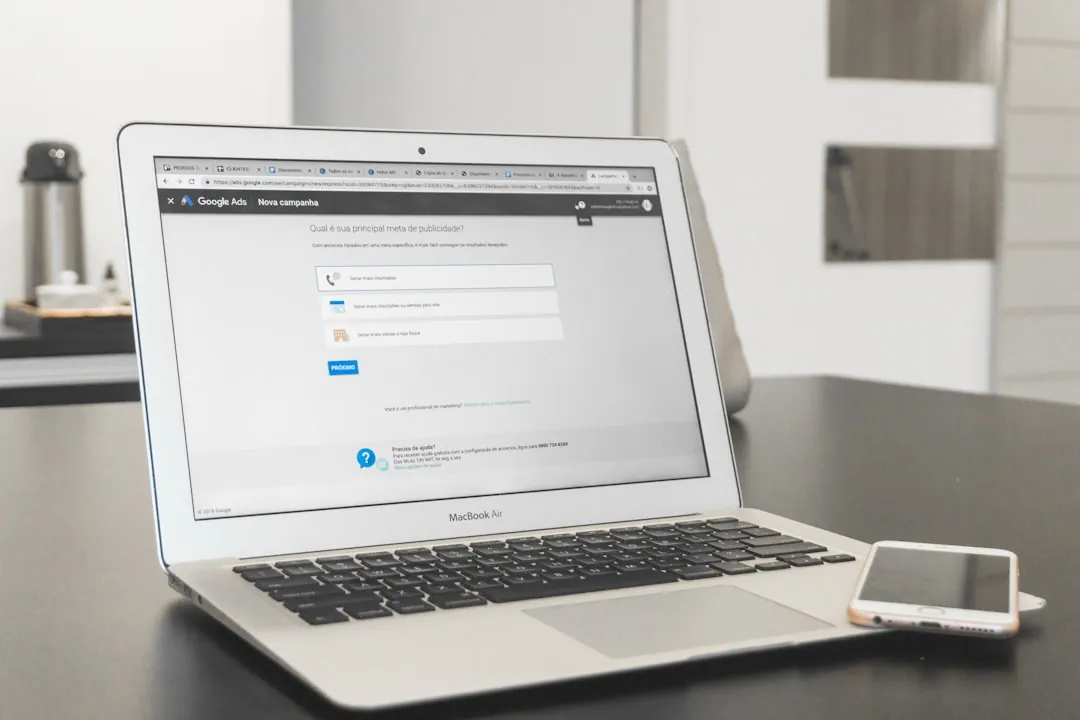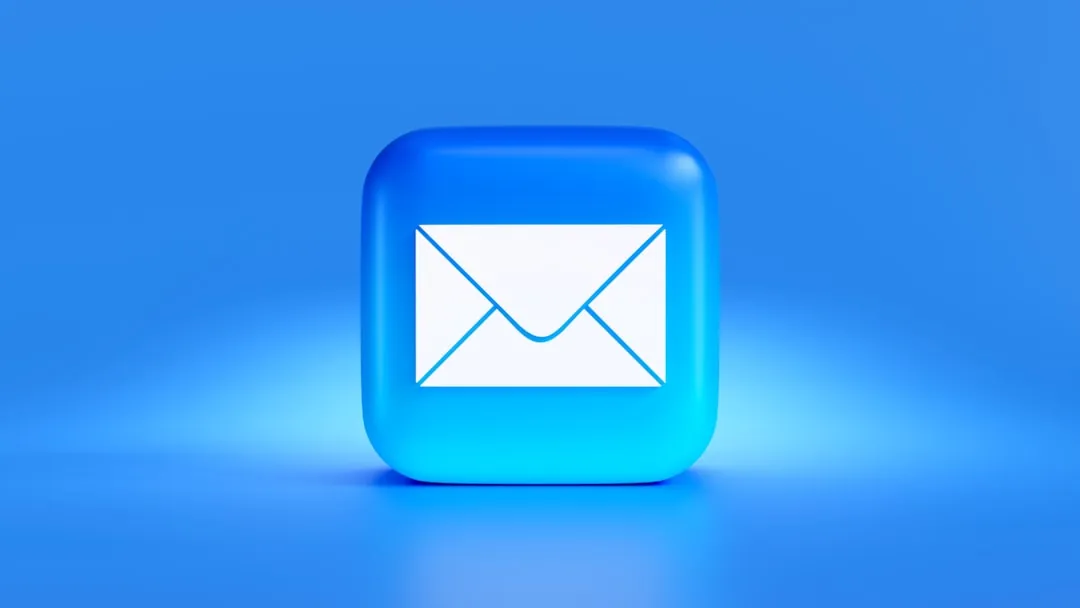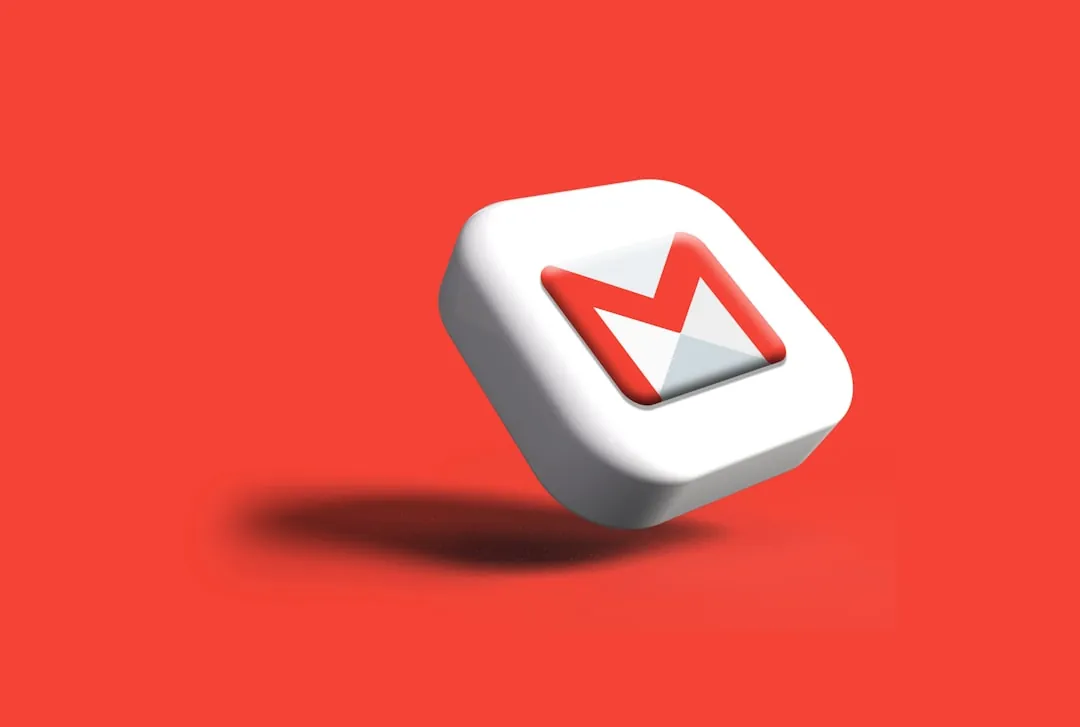Hey there, fellow hustlers! Ever feel like you're running in circles, constantly chasing after the next lead, spending hours writing individual emails, and still not seeing the ROI you deserve? I've been there. I remember the early days of Earn With Web, glued to my inbox, responding to every single message, feeling like a hamster on a very unproductive wheel. That's when I discovered the magic of email marketing automation.
It completely transformed my business, freeing up my time to focus on strategy, growth, and, well, actually enjoying the fruits of my labor. This isn't some hyped-up guru tactic; it's a real, tangible way to leverage technology to build stronger relationships with your audience, generate more leads, and ultimately, make more money online.
In this post, I'm going to break down everything you need to know about email marketing automation, from the basics to advanced strategies, so you can start automating your success today. Get ready to say goodbye to email fatigue and hello to a more profitable, automated future!
What IS Email Marketing Automation Anyway? (And Why Should You Care?)
Email marketing automation is basically the process of sending targeted emails to your subscribers based on pre-defined triggers and schedules. Think of it as setting up a series of dominoes – once the first one falls (a trigger), the rest follow in a predetermined sequence.
Instead of manually sending emails to each individual subscriber, you create automated workflows (or "automations") that handle various tasks, such as:
- Welcoming new subscribers: A friendly introduction to your brand and what they can expect.
- Nurturing leads: Providing valuable content to build trust and guide them towards a purchase.
- Onboarding new customers: Helping them get the most out of your product or service.
- Recovering abandoned carts: Reminding potential customers about items they left behind.
- Celebrating birthdays or anniversaries: Building a personal connection with your audience.
- Re-engaging inactive subscribers: Bringing them back into the fold or cleaning your list.
The beauty of automation is that it works 24/7, even while you're sleeping (or, you know, working on other aspects of your business!). It allows you to personalize the customer journey at scale, delivering the right message to the right person at the right time.
Why should you care? Because according to HubSpot, marketers who use marketing automation see a 451% increase in qualified leads. Think about that for a second. A 451% increase! That's not just incremental growth; that's a game-changer. Automation allows you to scale your efforts without exponentially increasing your workload. It's the key to working smarter, not harder, and building a sustainable, profitable online business.

Setting Up Your Email Marketing Automation System: A Step-by-Step Guide
Okay, so you're convinced that automation is the way to go. Great! Now let's get down to the nitty-gritty of setting up your system.
Choosing the Right Email Marketing Platform
First things first, you need a robust email marketing platform that supports automation. There are tons of options out there, but some of the most popular and effective include:
- GetResponse: A powerful platform with excellent automation features and a user-friendly interface. This is a great option if you're looking for a blend of ease of use and advanced capabilities.
- ActiveCampaign: Known for its sophisticated automation features and segmentation capabilities. Perfect for businesses that need highly targeted email campaigns.
- ConvertKit: Specifically designed for creators, with features like email courses, landing pages, and easy segmentation.
- Mailchimp: A widely used platform that's easy to get started with and offers a free plan for smaller lists. While its automation features are growing, it might not be as robust as the other options for complex workflows.
- Drip: E-commerce focused platform. If you primarily sell products through your website, Drip is a solid choice.
Actionable Tip: Don't just blindly choose the most popular platform. Take advantage of free trials or demos to test out different options and see which one best fits your needs and budget. Think about your current business needs and where you see your business going in the next 1-2 years.
Building Your Email List: The Foundation of Your Automation Success
Before you can automate anything, you need an email list! Building a high-quality, engaged list is crucial for the success of your email marketing efforts. Here's how to do it the right way:
- Offer a valuable lead magnet: Give people a compelling reason to subscribe. This could be a free ebook, a checklist, a video tutorial, a discount code, or access to a webinar. Something that provides genuine value and solves a problem for your target audience. For Earn With Web, a great lead magnet might be "The Ultimate Guide to Affiliate Marketing for Beginners".
- Create strategic opt-in forms: Place opt-in forms on your website, blog, and social media profiles. Make sure they are visually appealing and easy to find. Use tools like OptinMonster or Thrive Leads to create high-converting forms.
- Use landing pages: Design dedicated landing pages for your lead magnets to increase conversion rates. Landing pages should be clean, concise, and focused on the offer.
- Promote your lead magnet on social media: Share your lead magnet on your social media platforms and encourage people to sign up.
- Run contests and giveaways: Host contests and giveaways to generate leads and build excitement around your brand.
Important Note: Never, ever buy email lists. Not only is it illegal in many jurisdictions (hello, GDPR and CAN-SPAM!), but it's also a waste of money. Purchased lists are typically full of outdated or invalid email addresses, and the recipients are unlikely to be interested in your offers. Focus on building your list organically with engaged subscribers who genuinely want to hear from you.
Segmenting Your Audience: Delivering the Right Message to the Right Person
Segmentation is the key to personalization. By dividing your email list into smaller, more targeted segments, you can send more relevant and engaging emails. Common segmentation strategies include:
- Demographics: Age, gender, location, income, etc.
- Interests: Topics they are interested in, products they have purchased, content they have consumed.
- Behavior: Actions they have taken on your website or in your emails (e.g., clicking a link, downloading a file, abandoning a cart).
- Purchase History: Products they have purchased, frequency of purchases, average order value.
- Lead Source: Where they signed up from (e.g., a specific landing page, a social media campaign).
For example, on Earn With Web, we segment our audience based on their interest in different income streams, like affiliate marketing, dropshipping, or freelance writing. This allows us to send them targeted content and offers that are relevant to their specific interests.
Actionable Tip: Start with basic segmentation based on lead magnet signup or initial engagement, then gradually refine your segments as you gather more data about your subscribers. Most email marketing platforms offer tagging and segmentation features that make this process relatively straightforward.
Creating Your Automation Workflows: Putting it All Together
Now for the fun part: creating your automation workflows! This is where you define the triggers and sequences that will guide your subscribers through the customer journey.
Here's a step-by-step example of how to create a welcome sequence for new subscribers:
- Trigger: Subscriber joins your email list.
- Email 1 (Immediately): Welcome email. Thank them for subscribing, introduce your brand, and deliver the lead magnet. Include a clear call-to-action (CTA), such as "Download your free ebook now!" or "Watch the introductory video."
- Email 2 (3 days later): Provide additional value. Share a helpful article, a case study, or a free tool related to the lead magnet. Again, include a CTA, such as "Read the full article" or "Try the free tool." Suggest they check out another relevant resource.
- Email 3 (5 days later): Introduce your core offer. Explain how your product or service can help them solve their problem and achieve their goals. Include a strong CTA, such as "Learn more" or "Get started today." Offer a limited-time discount or bonus to incentivize them to take action.
- Email 4 (7 days later): Social proof and testimonials. Share testimonials from satisfied customers or case studies that demonstrate the effectiveness of your product or service. Include a final CTA, such as "Join our community" or "Start your free trial."
This is just a basic example, but you can create much more complex workflows based on your specific needs. For example, you could create workflows to:
- Onboard new customers and guide them through the initial setup process.
- Recover abandoned carts by sending reminder emails with special offers.
- Re-engage inactive subscribers by offering them exclusive content or discounts.
- Upsell or cross-sell existing customers by recommending related products or services.
Remember: Each email in your automation workflow should be valuable, engaging, and relevant to the subscriber. Focus on building relationships and providing solutions, not just selling.

Advanced Email Marketing Automation Strategies: Taking It to the Next Level
Once you've mastered the basics of email marketing automation, you can start exploring more advanced strategies to maximize your results.
Behavioral Email Marketing: Triggering Emails Based on User Actions
Behavioral email marketing involves sending emails based on specific actions that subscribers take on your website or in your emails. This allows you to create highly targeted and personalized campaigns that are more likely to convert.
Examples of behavioral triggers include:
- Visiting a specific page on your website: If someone visits a product page but doesn't add the product to their cart, you can send them an email with more information about the product or a special offer.
- Downloading a file: If someone downloads a lead magnet, you can send them a follow-up email with additional resources or a related offer.
- Clicking a link in an email: If someone clicks a link to a specific article, you can send them more content on that topic.
- Not opening an email in a certain period of time: You can send them a re-engagement email with a special offer or a different subject line to try and get their attention.
Dynamic Content Personalization: Tailoring Emails to Individual Subscribers
Dynamic content personalization allows you to customize the content of your emails based on the individual subscriber's profile and behavior. This could include:
- Personalizing the subject line with their name: "Hey [Name], check out this special offer just for you!"
- Showing different images or text based on their location: "Stay warm this winter with our new line of coats (available in [City])!"
- Recommending products based on their past purchases: "Based on your purchase of [Product A], we think you'll also love [Product B]!"
- Showing different offers based on their segment: "As a freelance writing enthusiast, you get 20% off our writing course!"
Personalization can significantly improve your email engagement and conversion rates. According to Experian, personalized emails deliver 6x higher transaction rates.
A/B Testing and Optimization: Continuously Improving Your Results
A/B testing is the process of comparing two versions of an email to see which one performs better. This allows you to identify the elements that are most effective at driving engagement and conversions.
Key elements to A/B test include:
- Subject lines: Test different subject lines to see which ones get the highest open rates.
- Email copy: Test different headlines, body copy, and calls to action.
- Images: Test different images or graphics to see which ones resonate best with your audience.
- Layout: Test different layouts and designs to see which ones are most visually appealing and user-friendly.
- Send times: Test different send times to see which ones result in the highest open and click-through rates.
Continuously testing and optimizing your email campaigns is essential for maximizing your results and achieving your business goals.
Measuring Your Success: Key Metrics to Track
You can't improve what you don't measure. So, how do you know if your email marketing automation is working? Here are some key metrics to track:
- Open Rate: The percentage of subscribers who opened your email.
- Click-Through Rate (CTR): The percentage of subscribers who clicked a link in your email.
- Conversion Rate: The percentage of subscribers who completed a desired action, such as making a purchase or filling out a form.
- Unsubscribe Rate: The percentage of subscribers who unsubscribed from your email list.
- Bounce Rate: The percentage of emails that could not be delivered.
- Return on Investment (ROI): The amount of revenue generated for every dollar spent on email marketing.
By tracking these metrics, you can identify areas for improvement and optimize your email campaigns to maximize your results.

Ready to Automate Your Way to Success?
Email marketing automation is a powerful tool that can help you build stronger relationships with your audience, generate more leads, and ultimately, make more money online. It's not a magic bullet, but it's a strategic investment in your business that will pay dividends over time.
So, what are you waiting for? Start implementing these strategies today and watch your business grow. Remember those early days of Earn With Web, when I was drowning in emails? By embracing automation, I was able to free up my time, focus on strategy, and scale my business to new heights. You can do it too!
Your next steps:
- Choose an email marketing platform: Review the platforms mentioned above and sign up for a free trial to test them out.
- Start building your email list: Create a valuable lead magnet and promote it on your website and social media channels.
- Segment your audience: Identify key segments based on demographics, interests, and behavior.
- Create your first automation workflow: Start with a simple welcome sequence and gradually add more complex workflows as you become more comfortable.
- Track your results and optimize: Continuously monitor your key metrics and make adjustments to your campaigns to improve your results.
Don't be afraid to experiment and try new things. The world of email marketing is constantly evolving, so stay curious, stay informed, and keep learning. And remember, Earn With Web is here to support you every step of the way. Good luck, and happy automating!
Frequently Asked Questions About Email Marketing Automation
-
Q: Is email marketing automation expensive?
A: It depends on the platform you choose and the size of your email list. Some platforms offer free plans for smaller lists, while others charge based on the number of subscribers and the features you need. However, even if you have to pay for a premium platform, the ROI of email marketing automation can be significant.
-
Q: How long does it take to see results from email marketing automation?
A: It depends on your specific goals and the effectiveness of your campaigns. You may start seeing results within a few weeks of implementing your first automation workflows. However, it takes time to build a strong email list, segment your audience, and optimize your campaigns. Be patient, stay consistent, and keep testing.
-
Q: Do I need to be a tech expert to use email marketing automation?
A: Not at all! Most email marketing platforms are designed to be user-friendly and offer drag-and-drop editors and pre-built templates that make it easy to create beautiful and effective emails. Plus, there are tons of online resources and tutorials available to help you get started.
-
Q: What are some common mistakes to avoid with email marketing automation?
A: Some common mistakes include:
- Buying email lists
- Sending too many emails
- Not segmenting your audience
- Sending irrelevant or unengaging content
- Not tracking your results
- Ignoring unsubscribe requests
-
Q: What if I get stuck?
A: Don't worry! There are plenty of resources available to help you. Most email marketing platforms offer excellent customer support and documentation. You can also find online communities and forums where you can ask questions and get help from other marketers. And of course, Earn With Web is always here to provide guidance and support.
Internal Linking Suggestions:
- Link to your affiliate marketing guide if mentioned.
- Link to your dropshipping resource if referenced.
- Link to a specific tool review you've done (e.g., OptinMonster, Thrive Leads).
- Link to a related article about building a high-converting landing page.
- Link to a page that discusses GDPR and CAN-SPAM compliance.